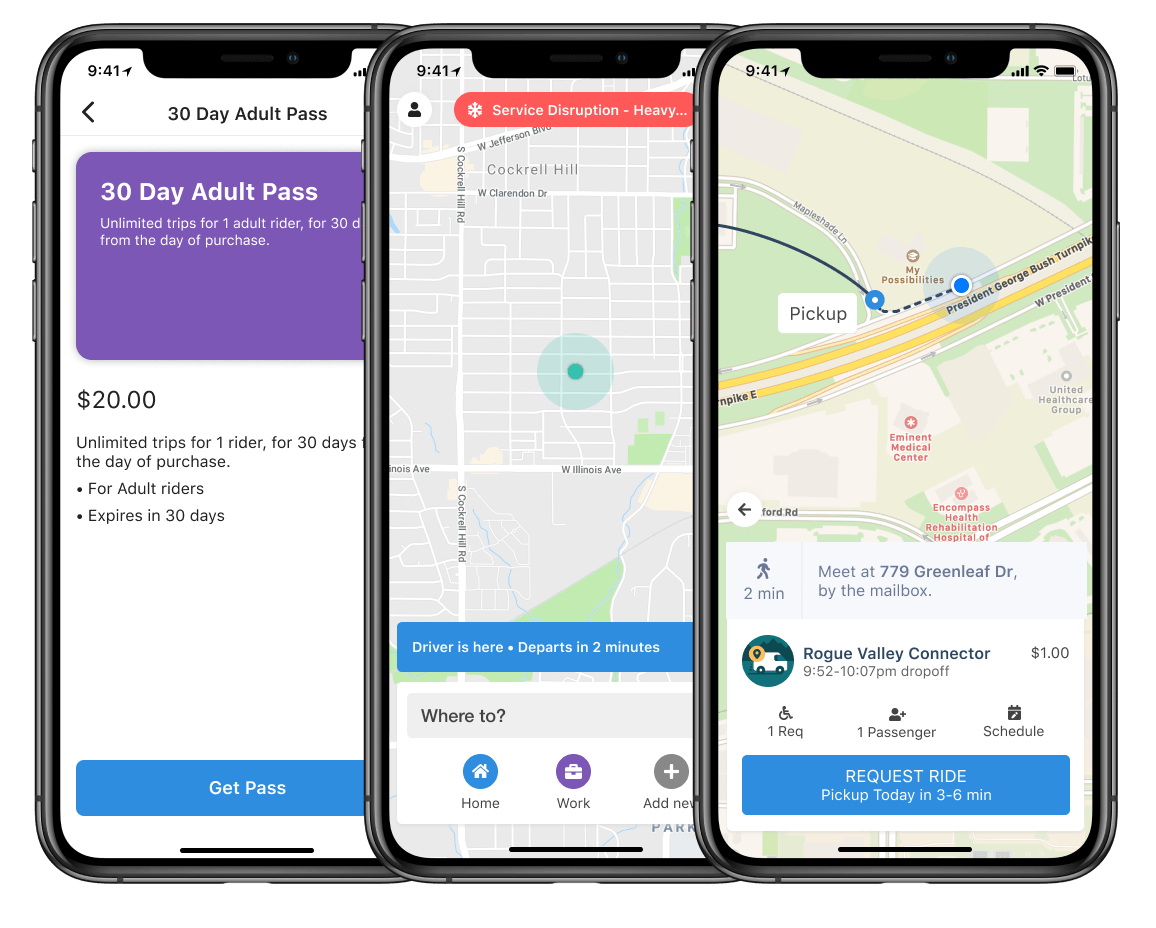What Will “Mass Transit” in the U.S. Look Like Post-COVID?
More Demand-Driven Buses and Shuttles Will Connect People in the U.S. as Cities Recover
Commuting Post-COVID
While daily commutes have changed
drastically since the onset of the pandemic, the shift in commuting behavior has
sparked innovative ways to address common problems faced by transit providers. Long
wait times and overcrowded trains and buses were issues prior to the pandemic,
and they will continue to be so (if not with even heightened importance) long
after the pandemic is over. Demand forecasting can improve transit services
by addressing both operational challenges and setting the stage for modular and
on-demand transit routing.
Shuttle services will complement
the progress that cities have been making towards improved mass transit prior
to the pandemic and will become more common transit solutions. Sophisticated algorithms
that can run multiple live origin and destination demand matrices will enable
the continued roll-out of on-demand bus and shuttle fleets, thus enhancing
existing transit services and improving equitable access to public transit. While
fixed rail and Bus Rapid Transit (BRT) lines will still be the core of mass
transit due to their high throughput efficiency, on-demand buses and shuttle
fleets will serve as complementary feeders and increase accessibility to these
larger transit modes in cities.
From the commuter’s perspective,
the biggest shift in post-COVID-19 commutes could be how we view and anticipate
bus service. Transit agencies are beginning to experiment with new ways of
thinking about routing, service frequency, and fleet sizes. Improved
computational speed and the power of real-time demand models might have the
greatest impact on bus service, allowing transit operators to respond quicker
to demand shocks with responsive routing and service frequency that have the potential
to fend off the post-COVID “Carmageddon” some are predicting. Such demand-driven
innovation in bus and shuttle services will be key tools in improving equitable
access to transit in areas that are currently underserved, providing better
service along routes with high concentrations of transit-dependent riders, and increasing
the safety, efficiency, and reliability of connecting people to their
destination.
Innovating Demand-Driven Bus and Shuttle Services
When COVID-19 hit National Express Transit , one of the largest private transit contractors in the United States with clients such as the Chicago Transit Authority and MBTA in Boston, they accelerated plans to develop NEXT Connect, a platform that offers flexible mobility solutions to transit agency customers. Partnering with leading on-demand transit software provider Spareto launch this on-demand solution, National Express’ NEXT Connect rider app is ensuring equitable mobility for all who need it.
Such is the case in Massachusetts where a National Express client, the Greater Attleboro-Taunton Regional Transit Authority (GATRA), was forced to suspend a number of its fixed-route lines that connected residents to Boston-bound commuter rail services and inter-town transfers. NEXT Connect is leveraging GATRA’s existing dial-a-ride infrastructure (including its vehicles and drivers) to launch a pooled, on-demand microtransit scheme that completely replaces the suspended fixed-route system. National Express is able to easily operate this new service thanks to Spare’s algorithms, which optimize passenger pick-ups, vehicle matching and routing without increasing its operational costs.
This link between transit operator and tech provider is quite novel. Normally, transit authorities, or the overarching public body, seek out solutions that address transportation challenges; the actual provider must then adapt to these solutions. But the three-way partnership in Attleboro-Taunton allows all parties to learn from one another, improve both the operational delivery and the software solution, and also provide a superior rider experience. National Express and Spare are actively pursuing this model in other U.S. markets.
Operationalizing Demand-Driven Bus and Shuttle Solutions that Complement Public Transit
The GATRA case is a great example of
successful collaboration between a transit operator, tech provider (demand
modeler), and transit agency working together to deliver an on-demand
micro-transit solution. Generating and utilizing demand data not only enable
a better experience for commuters, but they also can encourage residents to
avoid single occupancy vehicles, thus reducing congestion and a slew of
associated problems.
The opportunity to re-think bus
service and provide more demand-driven routes in low-to-mid demand areas can
help solve many key challenges facing transit agencies as well. While
pressures build to provide better and more equitable transit services, technology
will continue to be a key enabler of equitable outcomes that connect city
residents in underserved transit areas and enhance transit service throughout
the network.
Given the current volatile and uncertain demand for public
transit, now is the perfect time to test new demand-driven transit solutions that
do not increase operational costs for transit agencies. Underlining this work
should be a common alignment of equitable service provision goals and the
vision that demand-driven transit planning is the future of public transit. To
ensure success, transit agencies, transit operators, and software providers
must collaborate to provide these comprehensive solutions that benefit all
residents.
About the Authors:
Firas
Suqi
is the Manager of the Advanced Mobility Initiative and Millennium
Gateway Innovation Lab at City Tech Collaborative. Firas leads the solution
development pipelines for both the Initiative and the Lab, including assembling
the cross-sector teams necessary to create new solutions to complex urban
mobility challenges. Prior to joining City Tech, Firas was a Mobility Expert at
UN-Habitat, where he worked on strategizing large-scale urban mobility and
infrastructure projects across emerging megacities. Firas is a native Chicagoan
with experience working in over a dozen cities across four continents. He holds
a master’s in Urban Planning from Harvard University’s Graduate School of
Design in addition to a Bachelor’s in Anthropology & Sociology from Knox
College.
Jason Beevis
leads the
implementation and roll out of the NEXT Connect software solution at National
Express Transit, from pitching the concept to new and existing Transit Agency
customers to co-operating with technology partners to deliver the agreed solution.
Prior to moving to the US, Jason worked in the UK and Europe, developing new
digital products to make public transportation more relevant and accessible for
a new generation of riders.

